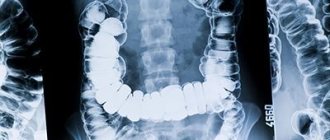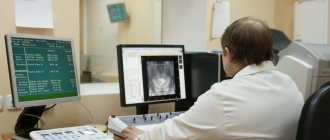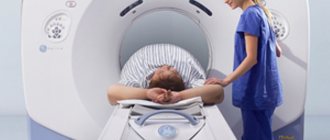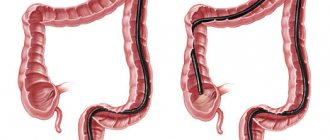Human immunity is directly related to the intestinal microflora, respiratory system and genital area. Tests for dysbacteriosis are a reliable and affordable way to clarify the origin of ailments and erect a reliable barrier to pathogenic strains. An imbalance, the disappearance of beneficial microorganisms, is often the root cause of many chronic diseases. Leads to the accumulation of toxins, atrophy of the gastrointestinal mucosa, poor absorption of vitamins and microelements, and activates the action of viruses.
Why do you need an analysis for dysbacteriosis?
To confirm that health problems are caused by dysbiosis, it is necessary to do a dysbiosis test.
Analysis for dysbacteriosis allows you to establish the concentration and determine the ratio:
- beneficial microorganisms such as lactobacilli, bifidobacteria, Escherichia coli with normal enzymatic properties;
- opportunistic, i.e. inhabiting the intestines, but not always leading to disease. (enterobacteria, staphylococci, clostridia, fungi of the genus Candida). Painful manifestations are observed, as a rule, only if the number of such microorganisms increases sharply and begins to exceed the norm;
- pathogenic, normally absent from the intestines (Shigella, Salmonella).
Dysbacteriosis: a diagnosis that does not exist
“Oh, my friend, you (your child, grandson, husband) should have your stool tested for dysbacteriosis!” If you hear this phrase from a doctor, run. Run before you are exhausted with unnecessary tests and treatment, because such a disease does not exist in nature.
Flora, entitled
How is it possible that there is no dysbacteriosis? After all, there is flora, which means it is quite likely that the balance in it may be upset. There really is a flora, and what a flora! As soon as the first sip of mother's milk reaches the lower gastrointestinal tract of the newborn, active colonization begins in the intestines. Microorganisms living in our body can take part in digestion, influence the formation of the immune response, metabolism, i.e., be useful, or they can “maintain neutrality.” By the way, the latter are the clear majority.
Today it is known that the human intestines are inhabited by about a thousand species of bacteria, viruses and fungi, and their total number is in the trillions. The weight of bacteria living in the body of an adult can reach several kilograms!
It is not surprising that in such species and quantitative diversity it is simply impossible to establish clear boundaries of the norm. It is reliably known that both the number of microorganisms in the intestines and their qualitative ratio are purely individual for each person and depend on many factors, including diet, habitat, hygiene rules, health status and many others.
And the main thing that those who want to treat dysbiosis need to remember is that each person has the right to his own personal composition of microflora, because there are no rules regulating it. And it can’t be!
By the way, note: in modern evidence-based medicine there are not only standards for the composition of microflora. There are no studies that have attempted to establish these norms. Do you know why? Because they cannot provide any necessary information about the state of health, since absolutely nothing depends on the quantity and composition of the intestinal microflora!
Meaning lost forever
But even if so, why do laboratories do stool tests for dysbacteriosis? Yes, they do. But the meaning of these actions is shrouded in darkness. And that's why.
First of all, the microflora is not distributed evenly throughout the intestines, but lives in a strictly defined order. There are luminal microorganisms, which are mixed with digested food, and parietal microorganisms, covering the intestinal wall and forming a multilayer biofilm, and strictly defined types of microbes live in each of its layers. The microbial composition of feces, which most often ends up in our laboratories as research material, differs significantly from the composition of the microflora living in different parts of the intestine. Moreover, if you take the test several days in a row, you will get completely different results, since the stool samples will not be identical either. What kind of norm and especially diagnosis can we talk about?
But even if you imagine that you are lucky to collect an “average stool analysis” (what if?), another problem appears, the solution to which does not exist at all, even by chance. The fact is that not all microorganisms can be grown on nutrient media. A stool test for dysbacteriosis can identify only a few dozen types of bacteria out of thousands of possible ones! What do you think the diagnostic value of such a “research” might be? The answer is obvious. Then why carry out manipulations that are not capable of providing at least some reliable information?
When is a test for dysbacteriosis prescribed?
Analysis for dysbacteriosis is prescribed:
- in case of intestinal dysfunction - with frequent or prolonged constipation or diarrhea, flatulence and abdominal pain;
- with intolerance to certain foods, allergic reactions (skin rashes);
- for intestinal infections;
- against the background of hormonal therapy or long-term treatment with antibiotics;
- newborns at risk;
- children and adolescents who often suffer from ARVI.
A test for dysbacteriosis can be prescribed by a general practitioner (general practitioner, family doctor, pediatrician) or gastroenterologist.
Treatment of dysbiosis
An important role in the normalization of microflora and the functioning of the digestive organs is played by a review of the diet and diet. Table No. 4 is recommended for such patients. A diet for dysbacteriosis involves giving up:
- spicy and fried foods, smoked delicacies;
- foods rich in sugars;
- quickly digestible carbohydrates;
- apples, bananas, grapes;
- and limiting dairy products.
Foods enriched with fiber are considered beneficial for microflora - whole grain baked goods, cereals, with the exception of white rice, vegetables, leafy greens and dried fruits. Fermented milk products containing prebiotics and stimulating the growth of beneficial microflora are also recommended.
Conservative treatment of dysbiosis involves the use of:
- Antimicrobial agents of synthetic origin - intestinal antiseptics.
- Probiotics. These are ready-made lacto-bifidoprobiotics in doses over 109 in one capsule.
- Prebiotics. They are substances that promote the growth and reproduction of beneficial flora.
- Synbiotics. Complex preparations containing both the microorganisms themselves and the components necessary for their development.
- Bacteriophages. Effective for fighting infection with the second degree of microflora imbalance. The treatment method is more often used for dysbiosis in infants, when the use of antibiotics is contraindicated.
- Immunomodulators. Used to restore immunity.
- Antibiotics. Prescribed for a common form of dysbiosis - in case of severe symptoms of intoxication, prolonged diarrhea, severe immunodeficiency and laboratory-confirmed dysbiosis of the third degree.
Pathogenetic therapy is also used to restore intestinal motility, reduce inflammation and restore the enzymatic activity of the digestive organs. To alleviate the symptoms of diarrhea, abdominal pain, and flatulence, symptomatic therapy drugs are prescribed.
Preparation for stool analysis for dysbacteriosis
3-4 days before the test, you must stop taking laxatives. You should also not use rectal suppositories.
If you have undergone an X-ray examination of the stomach or intestines with the introduction of a radiopaque substance, you will need to wait until it is completely removed from the body and only then collect material for analysis. Also, material obtained by enema is not suitable for analysis.
What else is prescribed with this study?
Adenovirus (diarrhea syndrome), antigen test
157.0. Feces 2 days
1,000 RUR Add to cart
Determination of pathogen sensitivity to antibacterial drugs (DDM)
01. 1 day
490 RUR Add to cart
Determination of pathogen sensitivity to bacteriophages
03. 1 day
220 RUR Add to cart
Determination of pathogen sensitivity to an expanded range of antibacterial drugs
02. 2 days
600 RUR Add to cart
Calculation of the effective dose of antibiotics with determination of the sensitivity of the pathogen to an expanded range of antibacterial drugs (MIC conclusion)
13. 2 days
960 RUR Add to cart
Interpretation of test results for dysbacteriosis
Pathogenic enterobacteria
– normally absent. Their presence indicates an acute intestinal infection. Enterobacteriaceae - salmonella and shigella - are the causative agents of a serious disease - dysentery.
Bifidobacteria
– ensure the breakdown and digestion of food, the absorption of iron, and the neutralization of toxins. The norm is 109-1010 CFU/g, in children of the first year of life 1010-1011. A significant decrease in the number of bifidobacteria is a clear sign of dysbacteriosis.
Lactobacilli
– break down lactose, maintain the required level of acidity of the colon, increase the activity of phagocytes – immune defense cells. Normal: 107-108 CFU/g, in children of the first year of life 106-107.
Escherichia coli (E.coli) with normal enzymatic activity
– prevents the development of opportunistic microflora, produces B vitamins, promotes the absorption of iron and calcium. Normal value: 107-108 CFU/g. A result below normal may indicate the presence of intestinal parasites - worms.
Escherichia coli (E.coli) with reduced enzymatic activity
– does not cause harm, but does not bring any benefit either. Normally, E. coli with similar properties should be no more than 105 CFU/g. An increase in its quantity is a sign of beginning dysbiosis.
Hemolytic Escherichia coli (E.coli)
- capable of producing toxins. Normally they should be absent.
Lactobacilli (lactobacillus, lactic acid microbes, lactic acid streptococci)
The second largest representative (5% of the total intestinal microorganisms) and the most important representative of the normal flora. Lactobacilli, or lactic acid microbes, as their name indicates, produce lactic acid, an essential component for normal intestinal function. Lactobacilli provide antiallergic protection, promote normal bowel movements, and produce highly active lactase, an enzyme that breaks down milk sugar (lactose). In the analysis, their number should be at least 106 - 107. Lactobacilli deficiency can lead to the development of allergic diseases, constipation, and lactase deficiency.
How to properly prepare for research?
To obtain reliable results, it is not enough to have qualified specialists and a well-equipped laboratory nearby. It is necessary to comply with the requirements for preparation for analysis and correctly collect feces.
Buy in advance at the pharmacy a sterile plastic container, equipped with a spoon and a tight-fitting lid, designed specifically for collecting and delivering stool for analysis.
In the previous three days, any foods that promote fermentation processes should be excluded from the diet. These include:
alcohol;
beet;
meat and fish dishes;
fermented milk products.
Three days before the test, stop (in consultation with your doctor) the use of medications such as:
antibiotics and other antibacterial chemotherapy drugs;
laxatives of any kind (including rectal suppositories, castor and petroleum jelly).
Wash the perineum and anus area well with soap before defecation. Collect stool in a sterile container, without urine. Close the sample tightly with a lid.
If there is bloody discharge or mucus, it should be included in the collected material. The child should be seated on a potty, previously well washed and rinsed with boiling water.
To conduct research, about 10 g of feces is enough; this is equal to a teaspoon in volume.
A very important factor for successful testing for dysbacteriosis is the rapid delivery of the container to the laboratory (no later than 40 minutes). Let's say two hours. Can be stored in the refrigerator for up to four hours. The longer the delay, the more anaerobic microorganisms will die from contact with the air. And this distorts the results obtained.
Staphylococcus aureus (S. aureus)
One of the most unpleasant (along with hemolyzing Escherichia coli, Proteus and Klebsiella) representatives of opportunistic flora. Even small amounts of it can cause pronounced clinical manifestations, especially in children in the first months of life. Therefore, usually the standards given in the analysis form indicate that it should not be present (in fact, amounts not exceeding 103 are acceptable). The pathogenicity of Staphylococcus aureus directly depends on the state of the normal flora: the more bifidobacteria, lactobacilli and normal Escherichia coli, the less harm from staphylococcus. Its presence in the intestines can lead to allergic reactions, pustular skin rashes, and intestinal dysfunction. Staphylococci are common environmental microbes, in particular they live in large quantities on the skin and mucous membranes of the upper respiratory tract. The baby can get them through breast milk. Weak children are most susceptible to infection with staphylococci (problem pregnancy, prematurity, cesarean section, artificial feeding, use of antibiotics - risk factors for weakening the functions of the immune system). It is important to understand that staphylococci, like other opportunistic bacteria, manifest themselves under certain conditions, the main one of which is a weakened immune system, therefore, it is important to carry out immunocorrective therapy in the treatment of dysbiosis associated with staphylococcus.
Lactose-negative enterobacteriaceae
A large group of opportunistic bacteria of greater or lesser degree of pathogenicity. Their number should not exceed 5% (or in titers: 103 – 106 – moderate increase, more than 106 – significant increase). The most unpleasant bacteria from this group are Proteus (most often associated with constipation) and Klebsiella (they are direct antagonists (competitors) of lactobacilli, which leads to the development of allergies and constipation, as well as manifestations of lactase deficiency). Often the analysis form indicates the total number of lactose-negative enterobacteria (the percentage is the most informative), and then there is a breakdown:
- Klebsiella;
- Proteas;
- Hafnia;
- Serrations;
- Enterobacter;
- Citrobakers.
Usually some amount of these bacteria live permanently in the intestines without causing problems. The standards may indicate numbers from 103 to 106, which are acceptable.
Epidermal (or saprophytic) staphylococcus (S. epidermidis, S. saprophyticus)
These types of staphylococci can cause problems, but up to 25% is acceptable. Percentage of hemolyzing cocci in relation to all coccal forms. Even among the relatively harmless cocci mentioned above, more pathogenic ones can be found, which is indicated in this position. If the total number of cocci is, for example, 16%, and the percentage of hemolyzing cocci is 50%, this means that half of the 16% are more harmful cocci, and their percentage in relation to the normal flora is 8%.







